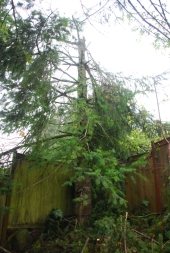I would like to start a conversation about Vaux's Swifts & Chimney Swifts.
They seem to be a major predator of flying insects, many of which are probably garden/farm pests.
I would guess that they soon will be (or already are) in trouble, for the following reasons:
-Their natural roosts are large old trees which are hollow and which have the tops broken off. These have always been rare, but now they are exceedingly rare, due to development/logging and because most humans consider such trees to be dangerous "snags" which could fall on someone or fuel a wildfire - thus we cut them down.
- Chimney swifts (which are mostly in the east) adapted to use large chimneys for roosts long ago. Vaux's swifts only recently adapted to using chimneys.
- However, open-top chimneys are no longer used in new construction, and most large old chimneys have been capped or torn down. Thus the number of chimneys which swifts can utilize is shrinking rapidly.
Has anyone here done any of the following to help swifts:
1. Uncapped a chimney to make it available to swifts (and bats)
2. Protected a large hollow snag from being cut down
3. Created a snag by girdling or cutting off the top of a large tree. Or even blasting the top off with dynamite:
http://www.opb.org/television/video/dynamiting-trees/
4. Built a swift roost
5. Planted a tree which you plan to convert to a snag at some point
I have done 1. & 5. and am considering doing 4. After uncapping the chimney, the swifts started using it within a few months.
For building a swift roost, I would like to build a stone masonry cylinder.
What thoughts do you have on swifts?







